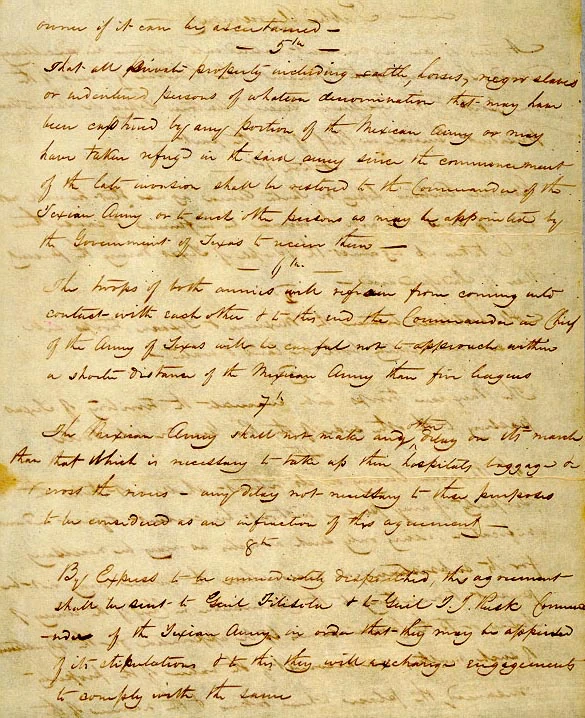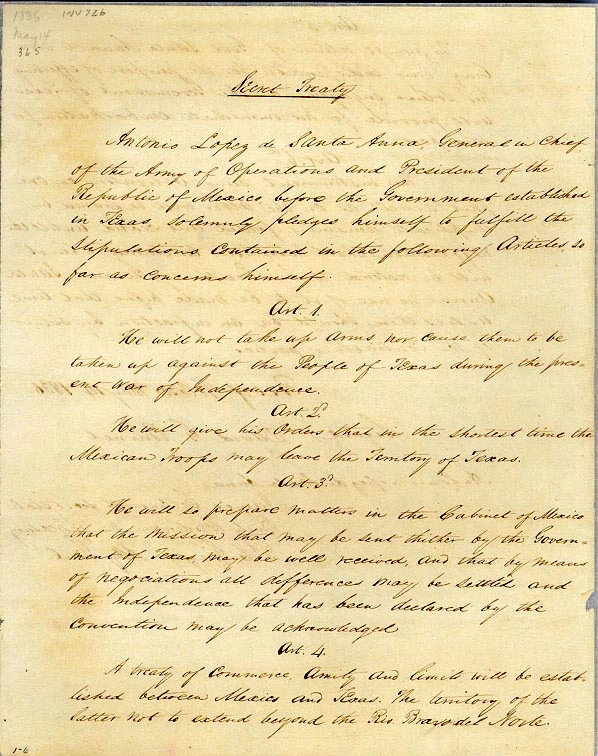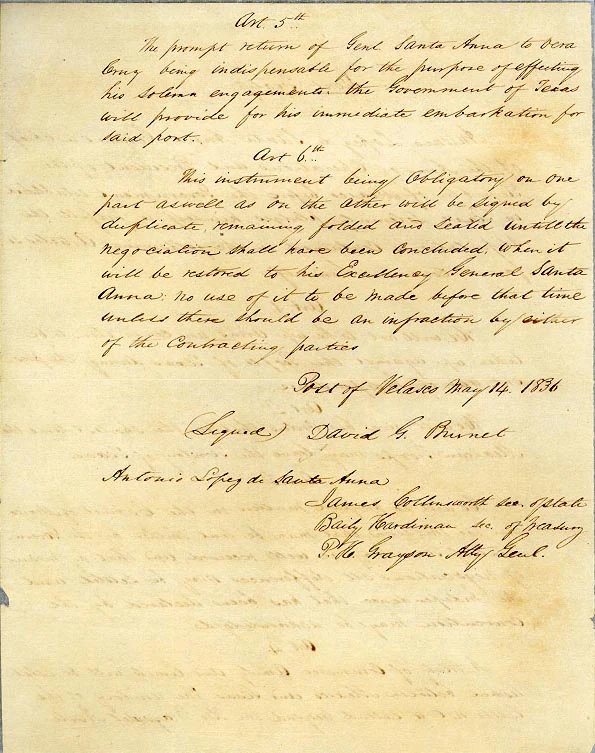Historical Context
The Treaty of Velasco marked the formal end of armed conflict between the Republic of Texas and Mexico following the Texan victory at the Battle of San Jacinto on April 21, 1836. After weeks of pursuit, Mexican President Antonio López de Santa Anna was captured and brought to the port town of Velasco (now Surfside Beach), where he negotiated with Texas officials under duress.
In May 1836, Santa Anna signed two documents: a public treaty to end hostilities and recognize Texan independence, and a secret agreement outlining further obligations—including a promise to lobby the Mexican government for recognition of Texas. Texans hoped the treaties would secure their new republic’s independence and encourage international recognition, particularly from the United States and European powers.
However, the Mexican government quickly rejected the Treaty of Velasco, claiming it was signed under coercion and therefore not binding. Nonetheless, the Texas government used the Treaty of Velasco to argue for the legitimacy of the Republic of Texas until annexation by the U.S. in 1845.
The public treaty of Velasco called for an end to fighting, withdrawal of Mexican troops, and the return of prisoners of war. It was made public shortly after signing and was presented to the world as a legitimate instrument of peace. The secret treaty, however, remained hidden for many years. It included Santa Anna’s personal pledge to influence Mexico’s recognition of Texas and to negotiate a permanent boundary at the Rio Grande—a position that would later become central to the U.S.–Mexico War a decade later
Texian leaders were divided over how to treat Santa Anna. Some wanted him executed for war crimes committed at the Alamo and Goliad, while others saw his capture as a diplomatic opportunity. Interim President David G. Burnet ultimately chose negotiation, believing it offered the best path to peace and independence. Santa Anna was eventually released and sent back to Mexico, where he disavowed the treaties and resumed power—but by then, Texas had begun functioning as an independent nation.
Despite their rejection by Mexico, Texans viewed the Treaties of Velasco as founding diplomatic documents. Today, they remain among the most discussed and symbolically significant primary sources from the Texas Revolution.
This article is part of Texapedia’s curated primary source collection, which makes accessible both famous and forgotten historical records. Each source is presented with historical context and manuscript information. This collection is freely available for classroom use, research, and general public interest.








